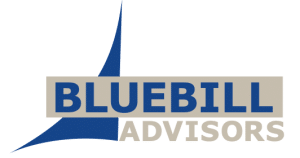It has been a week since the O’Reilly Tools of Change conference adjourned. The topics and presentations were provocative and there are sure to be some lively debates continuing on for months to come…
Several of the keynotes centered on the theme that “information wants to be free”.
Chris Anderson, Editor in Chief of Wired and author of the best seller, “The Long Tail”, was one of the early keynoters. He started the debate by announcing that the title of his next book would be “Free” and would focus upon making a case for providing content to consumers for no charge.
Towards the end of the first day, Jimmy Wales, President of the Wikimedia foundation, spoke about his new company called Wikia. His goal is for Wikia to do for the rest of the library what Wikipedia did for the Encyclopedia section and to make the assembled knowledge of the world available to the masses for free. And by the way, he’s going to produce a free Google competitor at the same time. (He certainly doesn’t lack for ambition.)
Erin McKean of the Oxford University Press closed the conference with a vivid discussion of “book-shaped objects” and openly questioned whether books were the best information package for the future. As a lexicographer, she weighed in on the “free” debate by saying that it would be better to state that all “information wants to be ambient”. She indicated that in this sense ambient means readily available for use. (Because I always had associated the word ambient with sound, lighting, or atmosphere, I checked several other dictionaries to clarify this sense of ambient. It did not appear. When I went to OED online, I found that their definition of ambient was neither free nor ambient but available for a mere $29.95/month. Because, Erin has yet to post her presentation on the O’Reilly site, you’ll have to trust my memory for this definition.) Her point is well taken; the word “free” is simply to vague. The American Heritage Dictionary (AHD) lists 17 different definitions or senses ranging from “matters of liberty” to “lack of restraint” to “lack of encumbrance” to “provided without consideration or reward”.
Mr. Anderson’s talk seemed to stress the economic meaning of “free”. . Thus, we must assume that he means that information or content should be available without consideration or reward. The popular justification for this approach to content valuation is that because cost of digital distribution is negligible, it is unfair to charge for content or information that is essentially free. If the distribution cost method were used to price traditional book content, the cost of printing, paper and binding would be the determining factor. Of course, that’s not the case. That approach omits many of the costs of publishing content including: reviewing, editing, formatting, proofreading, publicizing, selling, and marketing. And, of course, most authors like to be paid royalties for their work. It also neglects to consider the notion that many readers prefer traditional book formats and therefore many content elements will eventually be published in several media formats.
Mr. Anderson is first to admit, his book entitled “Free” won’t actually be free. Okay, the audio book or e-book may be free to those who purchase the printed book.. But if you want to purchase only the e-book or the audio book, you’ll be expected to pay for it. Mr. Anderson is also exploring various forms of online books or printed books that would either be sponsored by corporations or supported by (gasp) advertising. While some of these offerings might be free to the reader, it seems that there will be considerations and rewards built somewhere into this project.
He went on to say that he might well be in favor of making the book free because of the publicity benefits to his consulting practice, speaking fees, and the promotion value to his “personal brand”. However, he felt that his publisher would likely object because they are in the business of generating sales and revenues from selling books. (After the session, I heard several people suggest that Mr. Anderson could self-publish his new work and then he would be free to make it free).
Based upon his work at Wikipedia, Mr. Wales could be seen as a developer of truly free content. The governing organization is a charitable foundation and all of the authors are volunteers. The costs of supporting the staff and technology infrastructure are paid by donations. However, during his keynote, Mr. Wales was quick to point out two major differences between Wikipedia and Wikia. The scope of Wikia is much broader and it has been organized as a for profit entity.
Wikipedia represents the “perfect storm” for a collaborative work or “peering”. According to Wikinomics by Tapscott and Williams, there are three factors necessary to make peering effective: 1) the object of production is information or culture which keeps the cost of participation low for contributors; 2) Tasks can be chunked out into bite-sized pieces that individuals can contribute in small increments and independent of other producers. This makes their overall investment of time and energy minimal in relation to the benefits they receive in return; 3) The costs of integrating those pieces into a finished end product, including the leadership and quality control mechanisms must be low.”
While these criteria would apply to a number of other works found in a library, there are many others (novels, monographs, complex texts, dissertations, etc) that don’t meet these criteria well at all and aren’t likely to be challenged by collaboratative works. The costs associated with “wikiing” the rest of the library would likely be enormous. Mr. Wales seems to be banking on advertising dollars to support this effort. If this were the model, these works might be considered free from a consumer pricing perspective but the advertising revenues and potential profits would have to be deemed consideration in economic terms.
One also wonders whether the volunteer authorship model is extensible. I can see how it would work when the author is writing about a topic that is intensely interesting ( as I am doing at this moment). However, a great deal of content is more the result of craftsmanship than inspiration. It seems unlikely that volunteers could be recruited to write “drudge works”.
And as appealing as it may be to write essays or modules on interesting topics for free, I for one would enjoy it even more if I received some consideration for my hard work. (no wise cracks please). As popular as Wikipedia is today, someday it too may face a challenge from some organization (i.e. Google or Microsoft) that might add new features or devise a revenue sharing model that provides authors with incentives.
I guess my point is that an author’s ideas and created content are products. And like other products they should have a value proposition and a go-to-market strategy. The valuation/pricing options might include: purchase, subscription, sponsorship, syndication, promotion, and free. Depending on the utility, creativity, entertainment value, uniqueness of content, etc of content, one or more of the above models might be appropriate. While ‘free’ is one option, why should it be the preferred choice? Talented people like Mssrs. Anderson and Wales create content that is very good and are entitled to receive proper consideration if they so desire. Jeff Patterson, CEO of Safari Books Online, had some fascinating data on this topic. He studied how their customers for largely technical information value their information products vs. other content some of which are “free”. He found that some quality content was indeed free. However, most “free” content was either advertising supported or was offered in exchange for specific information about the content consumer or their work projects. He asked customers about the tradeoffs that they were willing to make to obtain content for free. If I recall correctly, about ¼ of their customers would rather pay for content if the advertising was inappropriate and/or distracting. !/3 of their customers would rather pay for content than reveal any personal information other that name and e-mail address. And 2/3 of their customers would rather pay for content than reveal in depth information about a project that they were working on. (Patterson’s presentation was one of the best—I hope that he posts his slides)
Advocating for universally free content might indeed have the unwanted effect of reducing the amount of excellent content that is created by professional authors who depend on their writing as their livelihood. I think that Bruce Chizen, Adobe’s CEO, summed it up nicely when asked by Tim O’Reilly where he stood in this debate. He said that Adobe makes many large investments of human and financial capital in the inventions and products that they produce. While he is all in favor of providing some of their intellectual property to consumers, standards organizations, and society for free, he reserves the right to make the decision as to what should be free. I’m sure that his stakeholders support that position.
I’ll conclude this entry with some thoughts on the provocative concept of ambient information. For many years, content was created for a single purpose and was closely regulated against peripheral usages. With the advent of the digital era, came significant opportunities for deriving additional value from content. I will forever be grateful to the senior management of Houghton Mifflin Company who saw the wisdom of freeing the content of their dictionary from exclusively “booklike objects” and allowed linguists and software engineers to build spelling correction technology. In fact, most of the English language spelling technology that is used today was derived from their American Heritage Dictionary database. And as I described in an earlier Blog entry, Thomson’s retiring CEO Richard Harrington made information ambience central to their core strategy and judging from their financial statements, they are receiving significant consideration for their efforts!!
Making content accessible to inform, educate, and entertain people is a worthy goal, Making content more ambient will offer content creators and publishers many new opportunities to publicize their work, create goodwill, answer new questions, solve difficult problems, and the option to generate new income streams that are appropriate and commensurate with the value of the content.

